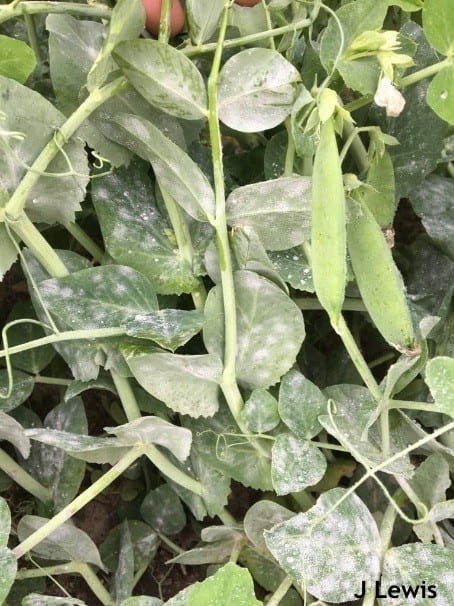Kate Everts, Vegetable Pathologist, University of Delaware and University of Maryland; keverts@umd.edu
Pea powdery mildew is currently widespread on Delmarva. This disease occurs throughout the US. The pathogen can overwinter in debris, on alternate hosts, or (less commonly) be seedborne. Because the pathogen is widespread, high disease severity occurs when conditions are favorable. Powdery mildew is favored by nights with dew, moderate temperatures (68-75F), and low light intensity. These conditions have prevailed in Maryland and Delaware for the last several weeks. Powdery mildew infestations can lead to uneven ripening of the crop, and yield loss (fewer peas per pod, lowered pea weight, etc.). Quality losses also occur. Several pea cultivars that are resistant to powdery mildew are available, and should be used if possible. Fungicides that are registered for management of powdery mildew include sulfur, which needs to be applied at 3 to 10 lbs/A, and Endura and Priaxor. These fungicide treatments can be costly because two applications at a 10 day interval may be needed.

